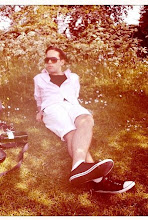For the regular Londoner, the tube is the cramped, airless, oft-broken embarrassment that is tolerated because no-one will visit you if you live near a National Rail station.
As such, the tube – its stations, lines, maps, history, design (can you sense my heart beating faster?) – evokes, in most, feelings of mild annoyance, of frustration, but mostly of apathy. I would like to suggest that the great majority of people reading this won’t know of a consultation just underway into the extension of the Northern Line to Battersea Power Station? Or that the Queen’s Park to Euston Overground route may be diverted via the freight line just by the Camden junction, to join the existing Richmond to Stratford Overground line (a controversial one – probably won’t go ahead because of public opposition from residents of the commuter-belt north of Harrow).
You might think that transport-geekery is reserved for the anorak-ed men who stand with pad and pen on railway platforms, making careful record of train numbers as they pass. Gents of Lincolnshire do this on the line from Grimsby to Doncaster. What do they expect might happen? Are they waiting for the day a major signalling error diverts a Japanese bullet-train via Scunthorpe, or the day Phillip Hammond mislays the train numbers floppy disk database?
I am here to disclose to the world the existence of a hitherto unspoken-of band of nerds, for whom nothing is as exciting as riding through a ‘dark’ station on the Piccadilly Line. As you can gather, I am a fully paid-up member. In fact, I’m the Honorary Treasurer and Social Secretary.
Since living in London, my soul has been warmed by the numbers of gay men of my socio-politico-intelligentio demographic who get excited by public transport. In fact, in my circles, it’s only gays who are train geeks like me. Quite literally, I am never happier than when using a new piece of transport infrastructure for the first time. On the rare occasions that I am late for a rendez-vous, it usually due to my getting overexcited by choosing a subversive tube and bus route.
My continued analysis of this phenomenon hasn’t proven particularly fruitful. Simply being attracted to the ‘glamour of rail travel’ doesn’t quite cover the public policy element of infrastructural change. Yes, we all love Celia Johnson, but we’re equally jelly-legged after encountering some Crossrail-related demolition. Similarly, I’ve noticed a shared love of the 1920s and 30s ‘speed’ aesthetic in transport advertising, but again it doesn’t permeate the nerdish qualities that will see me waste hours on the individual tube lines’ Wikipedia pages.
So, any ideas, folks? Any gays out there have some transport geekery to confess? You’re welcome to comment below, or simply dismiss these ramblings as my final attempt to prove that I’m not a geek.
*turns on DVD of driver’s eye view of the complete Bakerloo line journey*
